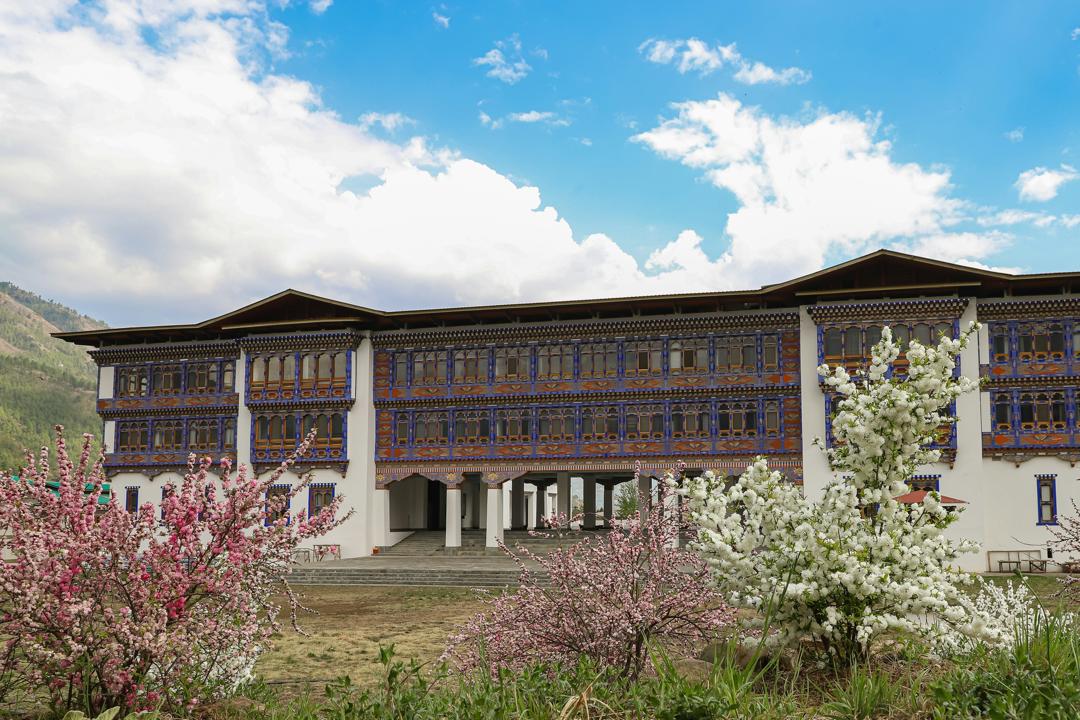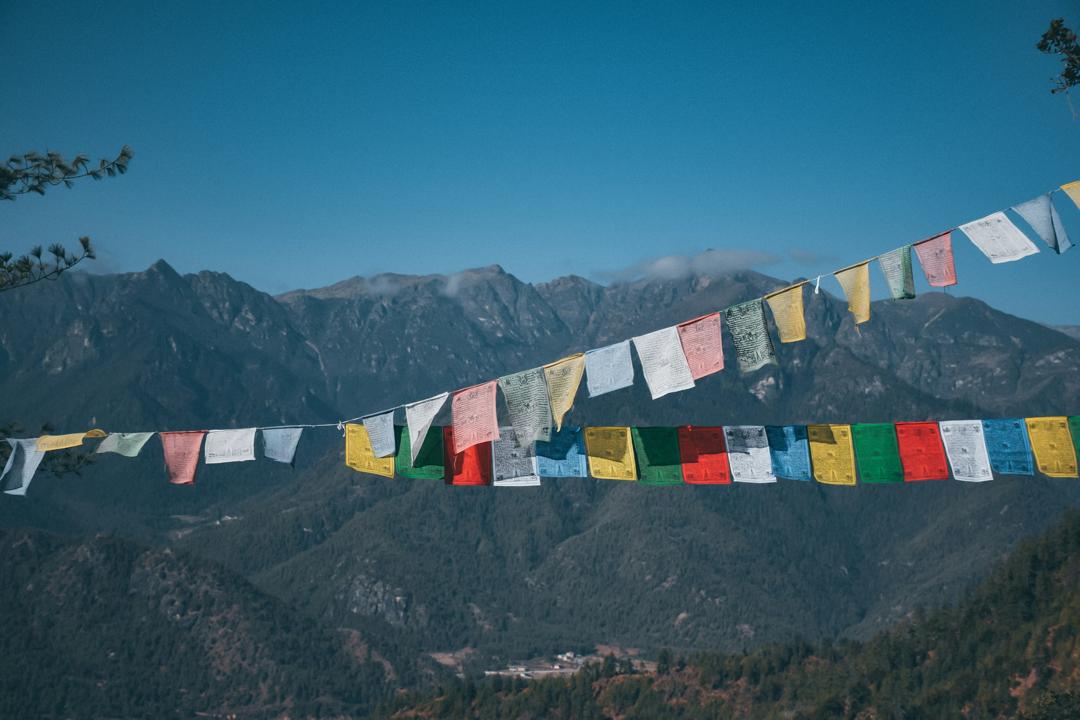Bhutan - The Land of Happiness
While Bhutan has been our destination for the past 6 years, our travels have not only taken us through the urban landscape of Paro but also to the remote and rugged terrain of Trashigang, where adventure awaits around every corner.
The Kingdom of Bhutan, aptly referred to as the "Land of the Thunder Dragon" by its inhabitants, is a serene and enigmatic nation that boasts a rich cultural heritage, breathtaking landscapes, and impressive architectural marvels. Situated on the eastern edge of the Himalayan Mountain range, Bhutan's unique topography encompasses a diverse ecosystem, featuring subtropical valleys, snow-capped mountain ranges, and vast forests that support a wide array of flora and fauna.
This picturesque country, with a population of approximately 771,608 people, offers an ideal setting for trekking through majestic valleys and steep mountains, allowing visitors to discover ancient architecture and Buddhist temples. Bhutan's culture is deeply rooted in Buddhism, with the majority of its 700,000 inhabitants practicing this religion. The country's secluded nature has enabled it to preserve its ancient traditions, which are showcased through vibrant festival reenactments.
Despite embracing technological advancements since the 1970s, Bhutan has managed to maintain its cultural identity. This unique blend of tradition and modernity has transformed the country into a coveted destination for adventurers, spiritual seekers, and those in pursuit of serenity.
Geographically, Bhutan is a small, landlocked nation situated in the South Asia region, bordered by the People's Republic of China to the north and the Republic of India to the south. Its northern border is shared with Tibet, while the Indian states of Sikkim, Arunachal Pradesh, and Assam border it to the east and south, respectively. With a total land area of 38,394 km², Bhutan is one of the least populated countries in the world.
Where is Bhutan Located?
Bhutan is a sovereign country located at the crossroads of East Asia and South Asia, situated towards the eastern extreme of the Himalayas mountain range. It is nestled in the Himalayas between its powerful neighbours, India and China. Specifically, Bhutan is situated on the slopes of the eastern part of the Himalayas. The country has a territory of 38,394 square kilometres (14,824 sq mi) and a population of approximately 777,200 (2024 est.), ranking 133rd in land area and 160th in population. The capital of Bhutan is Thimphu, and about 95% of the population lives in the southern subtropical zone or in the central mid-mountainous zone, mainly in the relatively gentle sloping areas. Bhutan shares its borders with India and Tibet (China), with its northern border defined by the Xuigiang Range of the eastern Himalayan mountains.
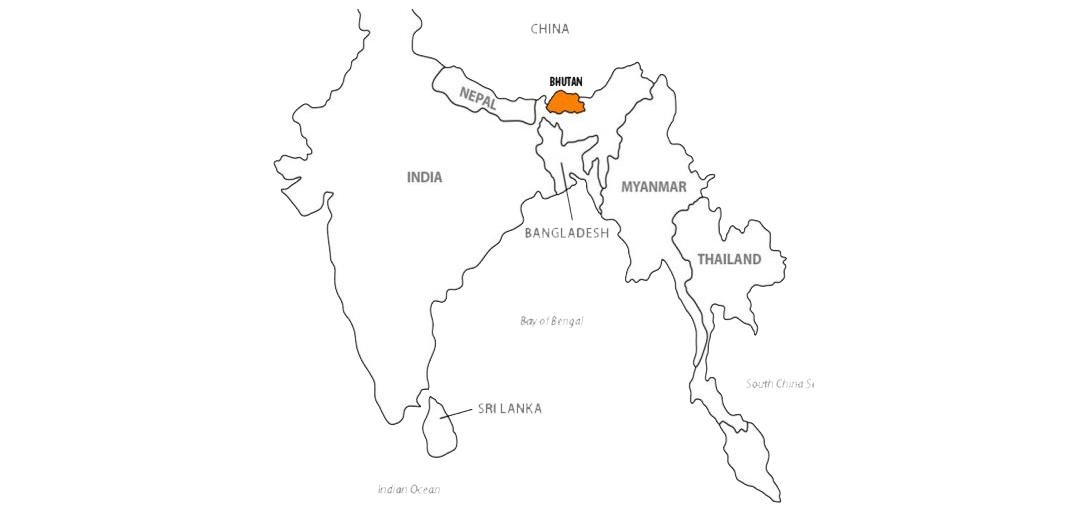
How to reach Bhutan
When it comes to reaching Bhutan, air and road travel are the most convenient options, given the absence of a railway station within the country. Nevertheless, tourists can take advantage of the nearest railway station, Hasimara, which is situated a mere 18 kilometers from Phuentsholing, Bhutan's gateway city.
In terms of air travel, Paro International Airport serves as the country's sole international airport, offering connections to major cities such as Delhi, Kolkata, Bangkok, Singapore and Kathmandu through Druk Air and Bhutan Airlines.
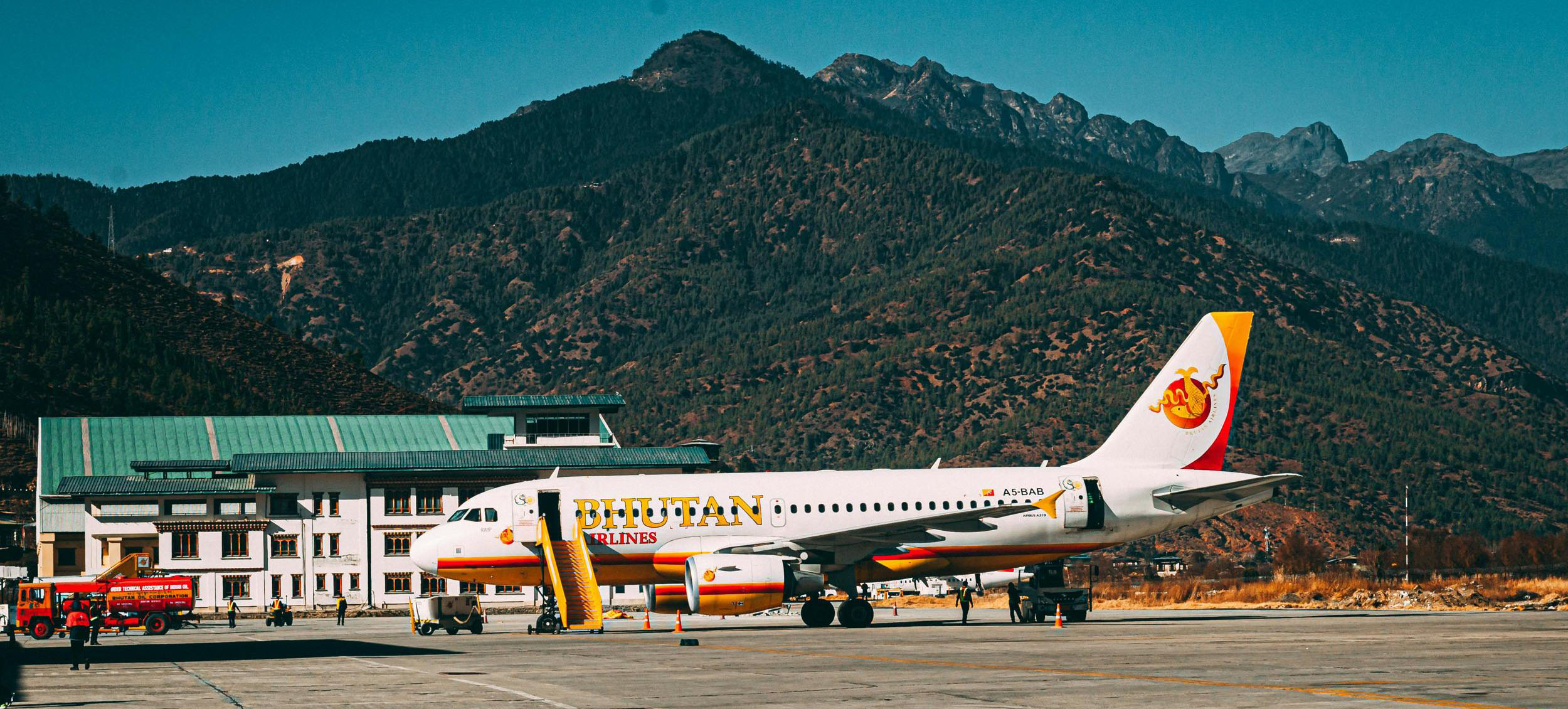
For those preferring to enter Bhutan by land, the primary entry point is Phuentsholing, which is conveniently located on the Indo-Bhutan border, with Jaigaon in India being the corresponding town. This makes it easily accessible for travelers to explore the country. Furthermore, accessing Bhutan via the border town of Phuentsholing is quite straightforward, with buses and taxis available for transportation within the country, ensuring a hassle-free travel experience. Although there are no direct train services to Bhutan, travelers can reach Phuentsholing by taking a train to either Hasimara or New Alipurduar in India and then continuing their journey by road.
Druk Air has recently announced the launch of a new route from Dubai to Paro, further expanding its international connectivity. This new route is expected to facilitate travel to Bhutan for tourists and business travelers alike.
CITIES CONNECTING BHUTAN
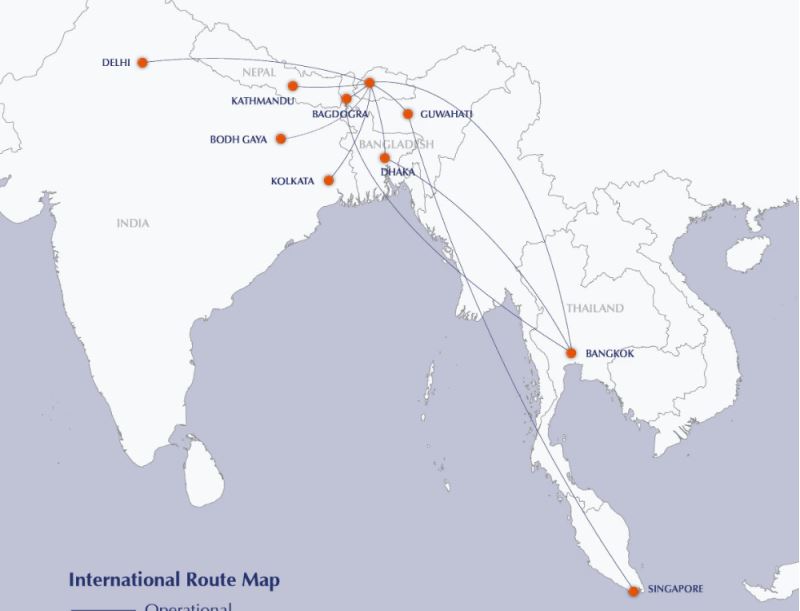
Druk Air is connected with nine different cities
Bhutan Architecture
Bhutan is filled with stunning architectural building, such as dzongs, goembas, and lhakhangs. Dzongs primary function, beginning in the 17th century, was as a fortress. Today the buildings are used as administrative offices for each of the 20 dzongkhas (districts) in Bhutan. Dzongs are made of stone or pounded mud and timber with wooden shingled roofs. Even though fires caused many of the dzongs to be rebuilt, reconstruction method are consistently traditional with the exception of iron roofs instead of wooden.
HIGH VALUE - LOW VOLUME
Bhutan's Commitment to Sustainable Tourism In a deliberate effort to safeguard its unique cultural heritage and pristine environment, the Royal Government of Bhutan has adopted a pioneering approach to tourism, prioritizing quality over quantity. Recognizing the potential risks associated with unchecked tourism, the government has implemented a "High Value, Low Volume" tourism policy, ensuring that the country's natural resources and ancient traditions are protected for future generations. This sustainable tourism model is designed to promote environmentally responsible travel practices, while fostering a deeper understanding and appreciation of Bhutan's rich cultural landscape among visitors. As the second-largest contributor to the national economy, tourism plays a vital role in Bhutan's development, with the government carefully balancing economic growth with environmental and cultural stewardship. In recent years, the Tourism Council of Bhutan has expanded tourism areas to include previously protected communities, natural reserves, and cultural sites, while introducing a Sustainable Development Fee (SDF) to mitigate the impacts of mass tourism. This forward-thinking approach enables Bhutan to maintain its commitment to sustainable development, preserving the country's unique character for generations to come.
The Dzongs are perhaps the most iconic architectural structures in Bhutan. These massive fortresses serve both as administrative centers and monastic institutions, playing a crucial role in the country's spiritual and political life. The most famous Dzong is the Paro Taktsang, or "Tiger's Nest," a breathtaking monastery perched on a cliffside that is one of Bhutan's most revered pilgrimage sites.
What is Sustainable Development Fees (SDF) Fees?
The Bhutan Sustainable Development Fee (SDF) is a fee imposed by the government of Bhutan on tourists visiting the country. The fee is part of Bhutan's "High Value, Low Volume" tourism policy, which aims to preserve the country's natural environment, cultural heritage, and overall sustainability while promoting high-quality tourism.
The revenue generated from the SDF is used to fund various developmental projects in Bhutan, including environmental conservation, infrastructure development, cultural preservation, and social services. This ensures that tourism benefits the country and its citizens while minimising negative impacts.
Certain exemptions or reduced rates may apply to tourists from countries within the South Asian Association for Regional Cooperation (SAARC) or to specific groups such as children.
Gross National Happiness (GNH)
Gross National Happiness (GNH) is a development philosophy introduced by the Fourth King of Bhutan, His Majesty Jigme Singye Wangchuck, in the 1970s. GNH is based on the belief that true development of a society occurs when material and spiritual development happen simultaneously, complementing and reinforcing each other.
GNH is built on four pillars: sustainable and equitable socio-economic development, conservation of the environment, preservation and promotion of culture, and good governance. These pillars guide Bhutan's policies and initiatives, ensuring that progress does not come at the expense of the environment or the country's rich cultural heritage.
Through GNH, Bhutan has gained international recognition as a leader in sustainable development, offering a model for other countries to follow in balancing economic growth with the well-being of their citizens and the health of the planet.
KEY ATTRACTIONS
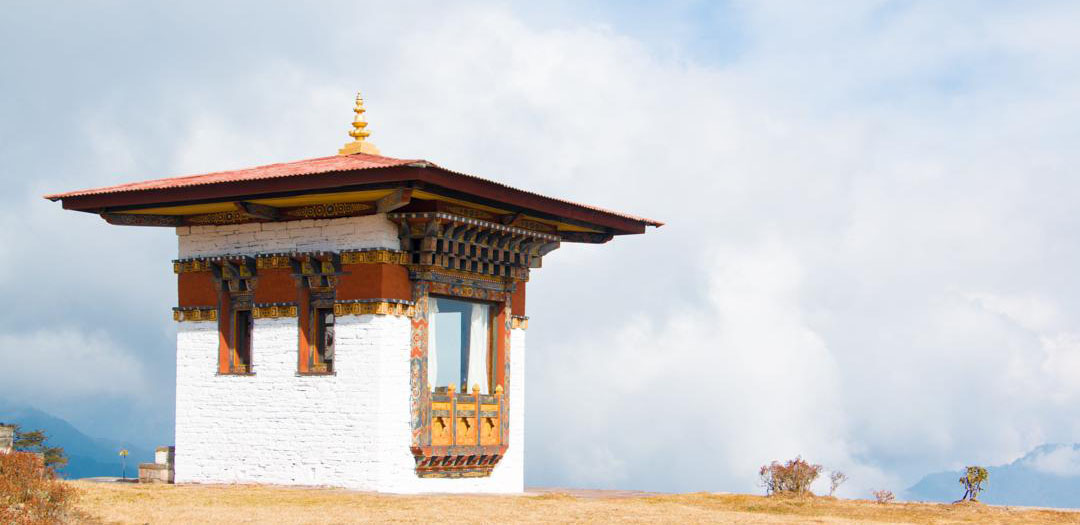
Tiger's Nest – Also known as Taktsang, is said to be the most spiritual place in Bhutan. The temple sits on the edge of a mountainside above the Paro Valley. The walk is 3,000 feet over the valley where you can experience the peaceful and tranquil Bhutan landscape. The temple was built to commemorate Guru Rinpoche. He came to that location the back of a flying tigress. After meditating for 3 years, Rinpoche worked to convert the Bhutan people to Buddhism.
Punakha Dzong – Surrounded by Jacaranda trees, the Punakha Dzong is one of the most beautifully crafted dzongs in Bhutan. It was the second dzong built in the kingdom as its capital. Later in the 1950’s, Thimphu became the country’s capital city. The Punakha Dzong rests on the edge of the convergence of the Mo Chhu and Pho Chhu Rivers. Over the years, a flood, an earthquake, and several fires have damaged he fortress, but it continues to be rebuilt with its ancient architectural integrity.
Festivals/Tshechu – Tschechus are religious festivals honoring Guru Rinpoche. Families gather to receive blessings and enjoy masked dancers as well as other performers that entertain the crowd. The festivals are held in several dzongs and goembas throughout the year. One of the most popular is the Punakha Tshechu and Drubchen, which is the only festival that reenacts the 1634 Battle of the Five Lamas.
Bumdra Trek – Bhutan offers a 2 or 3-day trek to the Bumdra Monastery. This guided tour is complete with the addition of a cook, assistant, and horses to carry your belongings. Starting at the Sang Choekhor Buddhist College, you will journey through a clearing that holds magnificent views of the Bhutan valleys and mountaintops. The first night will be spent in The Cave of a Thousand Prayers, which is just beneath the Bumdra Monastery. Visit the monastery and then travel on down the mountain to the Taktsang Monastery and on to the Paro Valley.
Soi Yaksa Trek – This trek is a 12-day tour of the Bhutan Kingdom. The trekking level is moderate, meaning that some of the terrain is smooth and easily travelled, while other parts are quite arduous. Reaching elevations of 4700 meters, you will explore wildlife, mountain peaks, and ancient temples.
Bumthang Valley – Bumthang Dzongkhag is a massive region that is made up of the Choekhor, Tang, Chhume, and the Ura Valleys. Choekhor Valley is the largest of the region as is considered the Bumthang Valley. This peaceful valley is filled with apple orchards, dairy farms, potato patches, and rice and buckwheat fields.
The first Swiss cheese making facility in Bhutan began in Bumthang. The factory is also a brewery that houses the best beer in Bhutan named the Red Panda. Guests can tour the brewery and cheese factory during specified hours.
Uma Punakha – The Uma by COMO Punakha is a resort style retreat that offers 11 luxury rooms with exquisite views of the Punakha Valley. The hotel contains a romantic restaurant with intercontinental and traditional Bhutanese cuisine and a luxurious spa with relaxing hot stone bath treatments.
Black-Necked Crane – The crane is a wildlife creature that comes to the Phobjikha Valley every winter. It is an endangered species and is celebrated by the Bhutanese annually with the Black-Necked Crane Festival. This 9-day event is intended to bring awareness to the bird’s importance. The Crane Festival is held on the King’s birthday, November 11th.
Traditional Textiles – Traditional textiles are generally created by Bhutanese women. The material is handwoven and dyed with intricate patterns making each garment unique. The National Textile Museum is in Thimphu.
Gom Kora – The Gom Kora or Gomphu Kora is a beautifully erected temple that is covered with Buddhist carvings. This is the site where the Guru Rinpoche meditated. He left his impressions on a rock. It is said that Rinpoche was meditating in a cave and was so startled by an approaching demon that he left his imprint on a rock. Once he turned into a garuda, he left an imprint of his wings on nearby rocks. Guru Rinpoche struck a deal with the demon to allow him to finish his meditations. The deal was sealed with two fingerprints left on the rocks that can still be seen.
Bhutan, a small kingdom nestled in the Himalayas, is a destination unlike any other. Here are some compelling reasons why you should consider visiting this enchanting country:
- Stunning Natural Beauty: Bhutan's landscapes are breathtakingly beautiful, from its snow-capped mountains and lush valleys to its pristine rivers and unique flora and fauna.
- Rich Cultural Heritage: Bhutan's culture is deeply rooted in Buddhism and tradition. The country is home to magnificent monasteries, vibrant festivals, and centuries-old customs that offer a unique glimpse into its heritage.
- Gross National Happiness (GNH): Bhutan is renowned for its emphasis on Gross National Happiness rather than GDP. This holistic approach to development focuses on the well-being and happiness of its citizens, creating a harmonious and peaceful environment.
- Adventure and Trekking: For adventure enthusiasts, Bhutan offers some of the world's most spectacular trekking routes, including the famous Tiger's Nest Monastery hike and the challenging Snowman Trek.
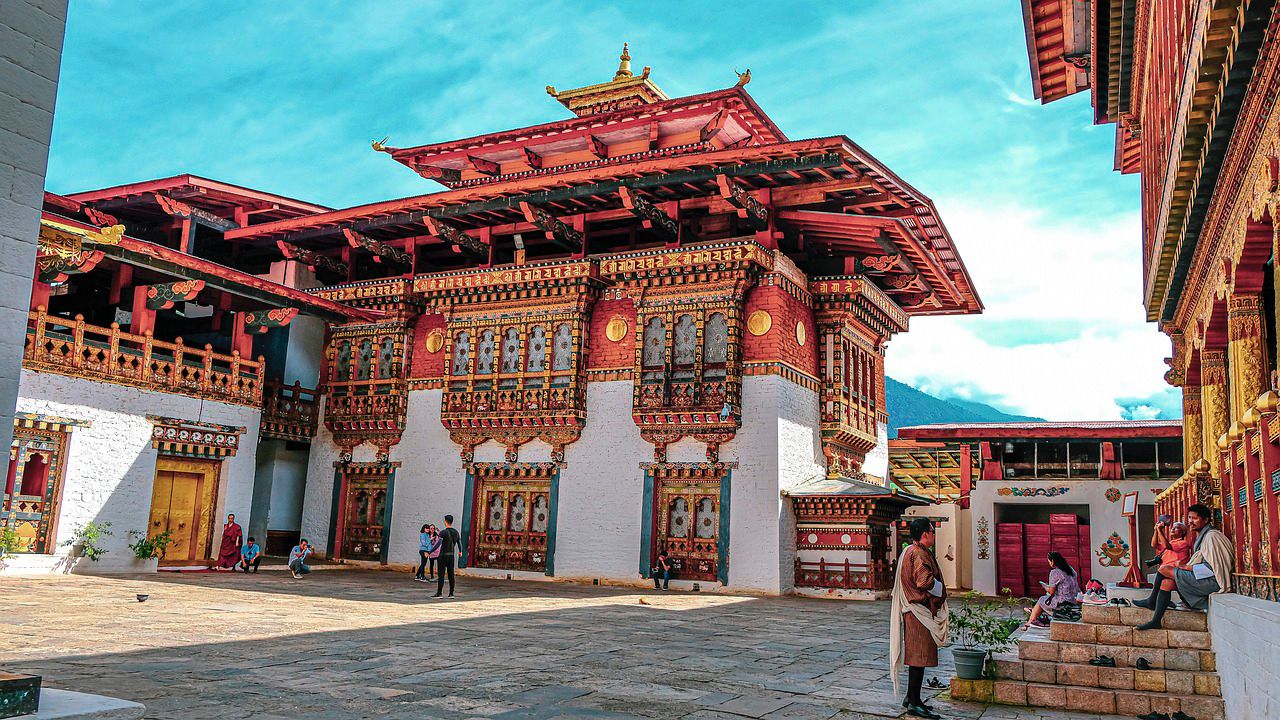
FESTIVALS IN BHUTAN
Tshechu, which translates to "tenth day," is a significant religious event celebrated annually in various temples, monasteries, and Dzongs across the country. Although the exact month of the festival varies from location to location, it is typically observed on the tenth day of the lunar calendar. This joyous occasion brings together the entire community, including families and loved ones, who gather to witness the festivities, receive blessings, and socialize with one another.
It is believed that attending the Tshechu and watching the traditional mask dances is essential for spiritual cleansing, as it is thought to absolve individuals of their sins. As a result, people make it a point to attend the festival, often donning their finest, colorful attire and bringing packed lunches to ensure a day filled with celebration and enjoyment.

THIMPHU TSHECHU FESTIVAL
Thimphu Tshechu Festival: Bhutan's biggest celebration with mask dances and prayers for good fortune. Attending the festival is believed to bring good fortune.
JAMBAY LHAKHANG DRUP FESTIVALS
Jambay Lhakhang Drup festival in Bumthang features mask dances, a fire ceremony, and the Dance of Treasure to bless infertile women.
Punakha Tshechu and Drubchen Festival
Punakha Drubchen festival reenacts a 17th-century battle with locals in traditional gear. Pays tribute to victory over Tibetans. Punakha Tshechu was introduced to preserve Buddhism.
Paro Tshechu Festival
Paro Tshechu is a five-day festival in Bhutan where monks and laymen dress up and dance together. The giant Thangka painting is shown to all on the last day.
